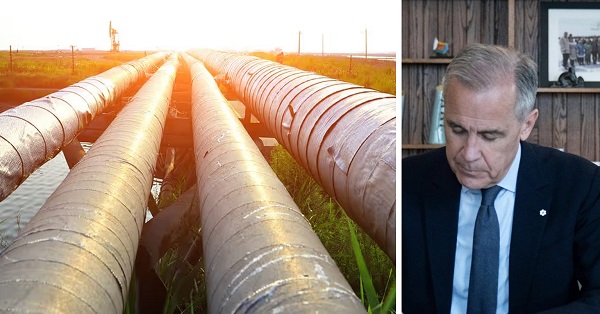Agriculture
Canadian Agriculture More Energy Intensive, More Efficient

Canadian Agriculture More Energy Intensive, More Efficient
It’s no secret that agriculture has contributed to climate change through various means. For example, you may know that livestock generates greenhouse gas emissions due to how farms process it. That said, it’s now clear that farmers have found sustainable ways to offset those contributions. In Canada, it’s all about energy use.
Here’s how Canadian farmers have become more efficient as they raise crops and livestock, setting a standard the world should follow.
Energy Demand and Consumption Have Fluctuated
The demand for energy has increased across the agricultural sector as a whole. However, it’s key to note that farmers have begun to use less energy despite that fact. That points to more efficient practices. The farmers who complete their work productively save time, money and energy. As a result, Canadian workers have reduced their energy consumption per dollar by 17%. That’s thanks to sustainability.
The most common energy sources include fuel, gas and electricity. It’s how farmers use those resources that counts. Combined with technology choices and new practices, it’s clear that efficiency is more achievable than ever.
What Contributes to This Phenomenon?
It’s crucial for people in agriculture to explore eco-friendly alternatives. The grasslands that many western Canadian farmers cultivate contains excess carbon, so you can imagine what the country as a whole holds underneath its surface. Farmers have now adopted new methods to adjust how they harvest their crops. These systems are better for production, as well as soil and seed health overall.
The agriculture industry has gone through many changes, too. There are fewer farms — but those that still operate have employed agricultural technology to be as efficient as possible. These tools include different equipment that cuts down on time to increase proficiency. Plus, it’s now more common to use solar power as an alternative to traditional energy solutions.
Why Accuracy and Precision Matters
It’s a lot easier to be energy efficient when you don’t waste your resources. The means farmers practiced before they used specific innovations often created a time deficit. If you have a smaller machine, you likely need to do twice as much work. However, when you have access to equipment that fits your field, you don’t have to be as wasteful. The accuracy and precision created by technology make this a reality.
Soil Conservation Is Led by Ranchers
Many farmers have looked to ranchers for help. It’s a native part of ranching to preserve topsoil and other elements that are inherently sustainable. As a result, it seems like ranchers have been leading the charge against climate change for decades. The tactics they use to avoid tilling soil, for example, help preserve the amount of carbon that lies underneath the Earth’s surface.
The “no-till” practice is efficient in its own right. Rather than till your soil to plant a new crop, you simply leave behind what’s already there. This method is much better for soil nutrition, and it can keep carbon exposure at bay. As a result, you have much fewer carbon emissions. In general, the idea of soil conservation isn’t a new one, but old tricks can still work alongside modern technology.
The Future of Agriculture in Canada Looks Bright
If farmers continue on this path, it’ll be clear that climate solutions are at the forefront of their minds. These efforts create more benefits for them as they save time and money. Plus, there’s always the responsibility of maintaining the planet’s health. After all, without a strong ecosystem, agriculture would suffer. Through means that are more accurate and conservative, Canadian farmers have been able to become more efficient. Click here read more stories by Emily Folk.

I’m Emily Folk, and I grew up in a small town in Pennsylvania. Growing up I had a love of animals, and after countless marathons of watching Animal Planet documentaries, I developed a passion for ecology and conservation.
Agriculture
Health Canada indefinitely pauses plan to sell unlabeled cloned meat after massive public backlash

From LifeSiteNews
Health Canada has indefinitely paused its plan to allow unlabeled cloned meat in grocery stores after thousands of Canadians, prominent figures, and industry leaders condemned the move.
Health Canada is pausing its plan to put unlabeled cloned meat in Canadian grocery stores, following public outcry.
In a November 19 update on its website, Health Canada announced an indefinite suspension of the decision to remove labels from cloned meat products after thousands of Canadians condemned the plan online.
“The Government of Canada has received significant input from both consumers and industry about the implications of this potential policy update,” the publication read. “The Department has therefore indefinitely paused the policy update to provide time for further discussions and consideration,” it continued, adding, “Until the policy is updated, foods made from cloned cattle and swine will remain subject to the novel food assessment.”
In late October, Health Canada quietly approved removing labels from foods derived from somatic cell nuclear transfer (SCNT) clones and their offspring. As a result, Canadians buying meat from the grocery store would have had no way of knowing if the product was cloned meat.
Many researchers have documented high rates of cloning failure, large offspring syndrome (LOS), placental abnormalities, early death, and organ defects in cloned animals. The animals are also administered heavy doses of antibiotics due to infections and immune issues.
Typically, the offspring of cloned animals, rather than the cloned animals themselves, are processed for human consumption. As a result, researchers allege that the health defects and high drug use does not affect the final product.
However, there are no comprehensive human studies on the effects of eating cloned meat, meaning that the side-effects for humans are unknown.
News of the plan spread quickly on social media, with thousands of Canadians condemning the plan and promising to switch to local meat providers.
“By authorizing the sale of meat from cloned animals without mandatory labeling or a formal public announcement, Health Canada risks repeating a familiar and costly failure in risk communication. Deeply disappointing,” food policy expert and professor at Dalhousie University Sylvain Charlebois wrote on X.
"By authorizing the sale of meat from cloned animals without mandatory labeling or a formal public announcement, Health Canada risks repeating a familiar and costly failure in risk communication. Deeply disappointing."
More on this week's Food Professor Podcast! https://t.co/UZTIcQzUN3
— The Food Professor (@FoodProfessor) October 30, 2025
Likewise, Conservative MP Leslyn Lewis warned, “Health Canada recently decided that meat from cloned animals and their offspring no longer needs a special review or any form of disclosure.”
“That means, soon you could buy beef or pork and have no idea how it was bred,” she continued. “Other countries debate this openly: the EU has considered strict labelling, and even the U.S. has admitted that cloned-offspring meat is circulating.”
“But here in Canada, the public wasn’t even told. This is about informed choice,” Lewis declared. “If government and industry don’t have to tell us when meat comes from cloned animals, then Canadians need to ask a simple, honest question: What else are we not being told?”
Health Canada recently decided that meat from cloned animals and their offspring no longer needs a special review or any form of disclosure. That means, soon you could buy beef or pork and have no idea how it was bred.
Other countries debate this openly: the EU has considered… pic.twitter.com/zCnqJOpvf3
— Dr. Leslyn Lewis (@LeslynLewis) November 14, 2025
Likewise, duBreton, a leading North American supplier of organic pork based out of Quebec, denounced the move, saying, “Canadians expect clarity, transparency, and meaningful consultation on issues that directly touch their food supply. As producers, we consider it our responsibility and believe our governing food authorities should too.”
According to a survey conducted by duBreton, 74 percent of Canadians believe that “cloned meat and genetic editing practices have no place in farm and food systems.”
Agriculture
Federal cabinet calls for Canadian bank used primarily by white farmers to be more diverse

From LifeSiteNews
A finance department review suggested women, youth, Indigenous, LGBTQ, Black and racialized entrepreneurs are underserved by Farm Credit Canada.
The Cabinet of Prime Minister Mark Carney said in a note that a Canadian Crown bank mostly used by farmers is too “white” and not diverse enough in its lending to “traditionally underrepresented groups” such as LGBT minorities.
Farm Credit Canada Regina, in Saskatchewan, is used by thousands of farmers, yet federal cabinet overseers claim its loan portfolio needs greater diversity.
The finance department note, which aims to make amendments to the Farm Credit Canada Act, claims that agriculture is “predominantly older white men.”
Proposed changes to the Act mean the government will mandate “regular legislative reviews to ensure alignment with the needs of the agriculture and agri-food sector.”
“Farm operators are predominantly older white men and farm families tend to have higher average incomes compared to all Canadians,” the note reads.
“Traditionally underrepresented groups such as women, youth, Indigenous, LGBTQ, and Black and racialized entrepreneurs may particularly benefit from regular legislative reviews to better enable Farm Credit Canada to align its activities with their specific needs.”
The text includes no legal amendment, and the finance department did not say why it was brought forward or who asked for the changes.
Canadian census data shows that there are only 590,710 farmers and their families, a number that keeps going down. The average farmer is a 55-year-old male and predominantly Christian, either Catholic or from the United Church.
Data shows that 6.9 percent of farmers are immigrants, with about 3.7 percent being “from racialized groups.”
National census data from 2021 indicates that about four percent of Canadians say they are LGBT; however, those who are farmers is not stated.
Historically, most farmers in Canada are multi-generational descendants of Christian/Catholic Europeans who came to Canada in the mid to late 1800s, mainly from the United Kingdom, Ireland, Ukraine, Russia, Italy, Poland, the Netherlands, Germany, and France.
-

 Daily Caller1 day ago
Daily Caller1 day ago‘No Critical Thinking’: Parents Sound Alarm As Tech Begins To ‘Replace The Teacher’
-

 Alberta2 days ago
Alberta2 days agoFalling resource revenue fuels Alberta government’s red ink
-

 Alberta2 days ago
Alberta2 days agoREAD IT HERE – Canada-Alberta Memorandum of Understanding – From the Prime Minister’s Office
-

 Daily Caller20 hours ago
Daily Caller20 hours agoJohn Kerry Lurches Back Onto Global Stage For One Final Gasp
-

 Alberta2 days ago
Alberta2 days agoAlberta can’t fix its deficits with oil money: Lennie Kaplan
-

 Alberta2 days ago
Alberta2 days agoIEA peak-oil reversal gives Alberta long-term leverage
-

 International1 day ago
International1 day agoTrump vows to pause migration after D.C. shooting
-

 Daily Caller2 days ago
Daily Caller2 days agoZelenskyy Under Siege As Top Aide Resigns After Home Raided In Major Corruption Scandal




